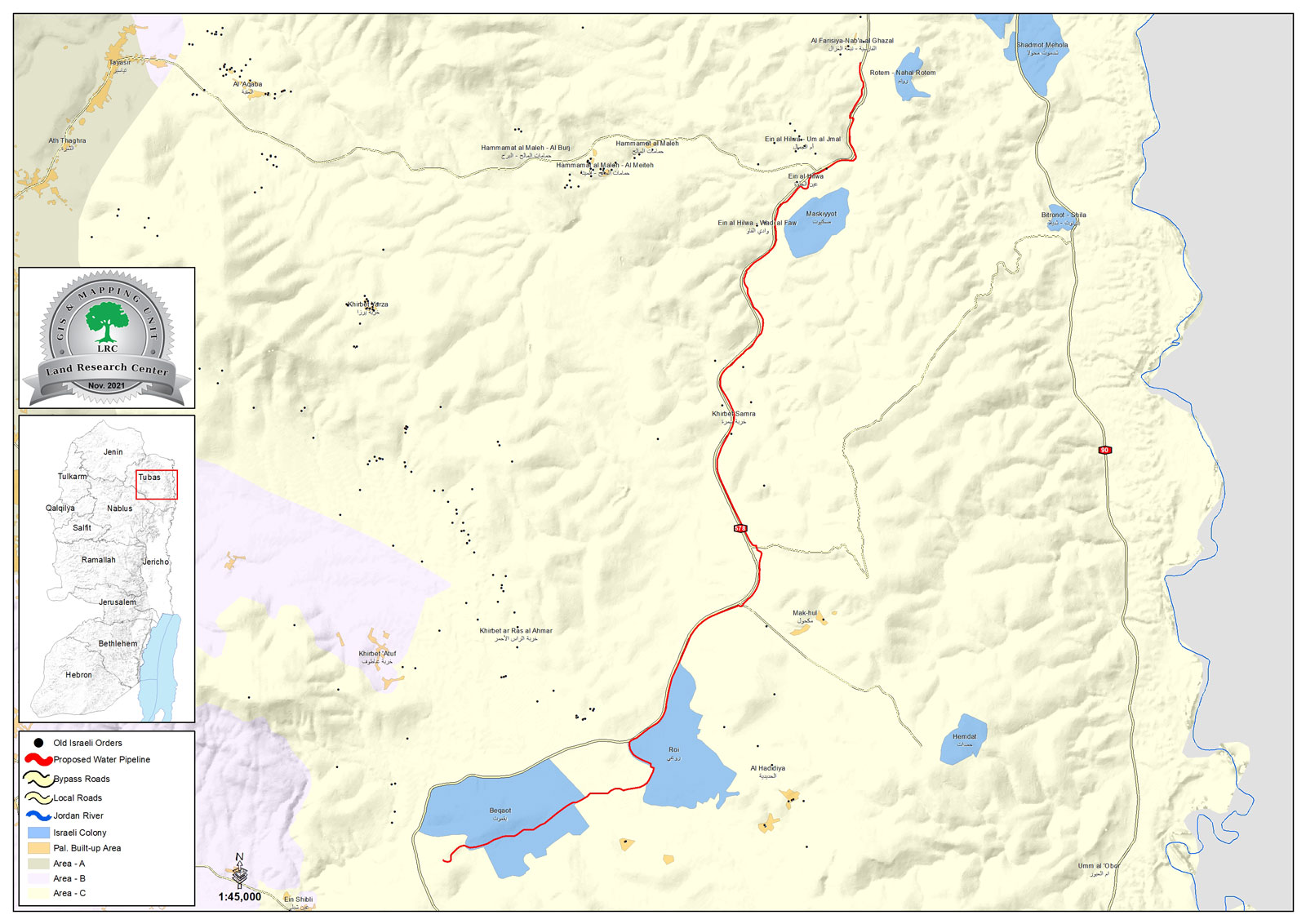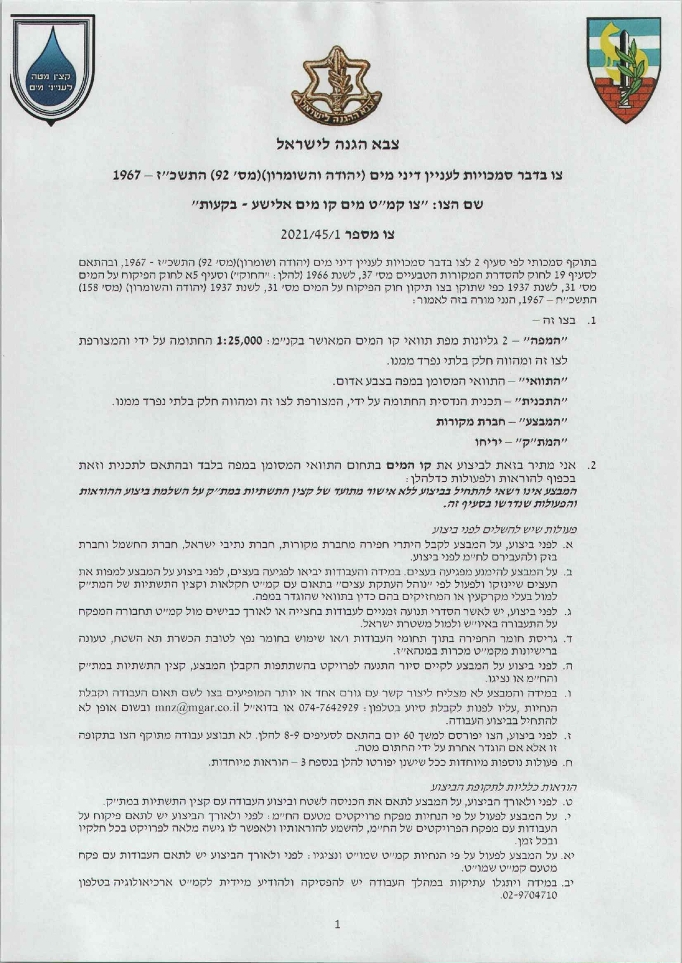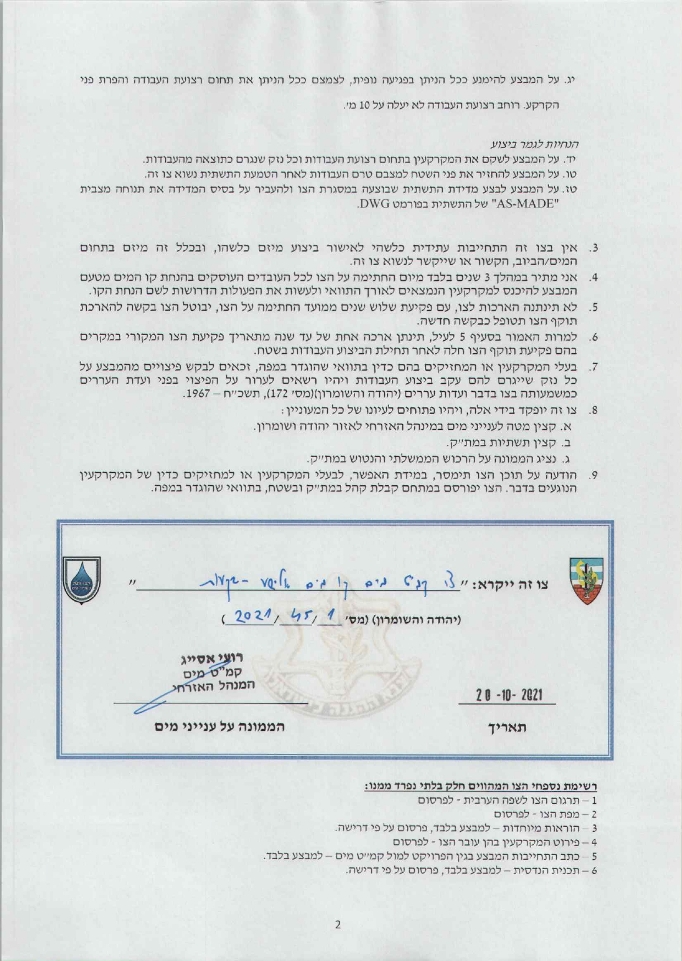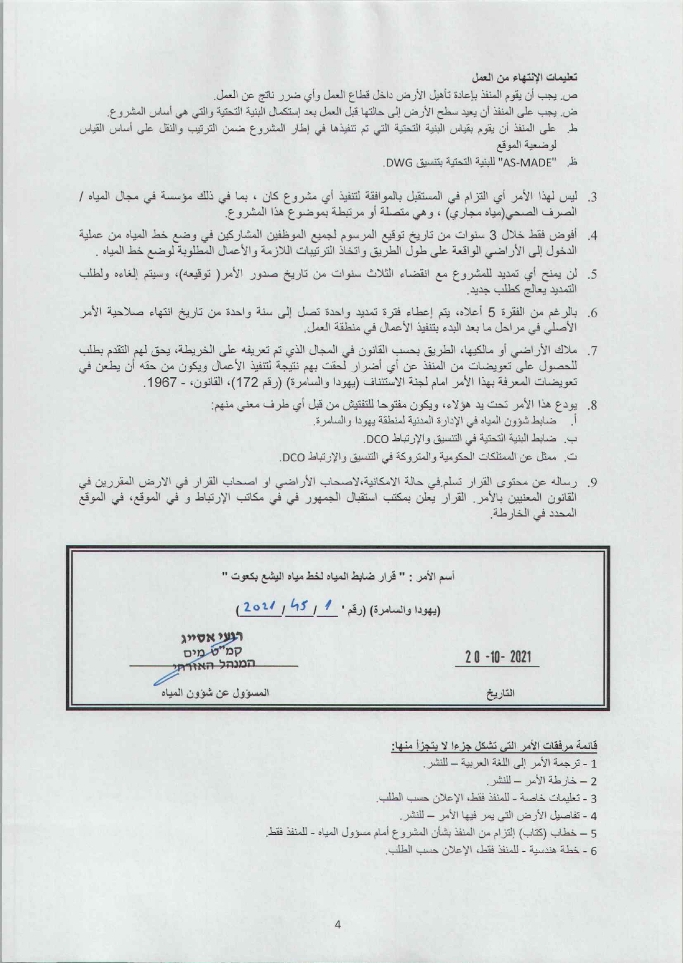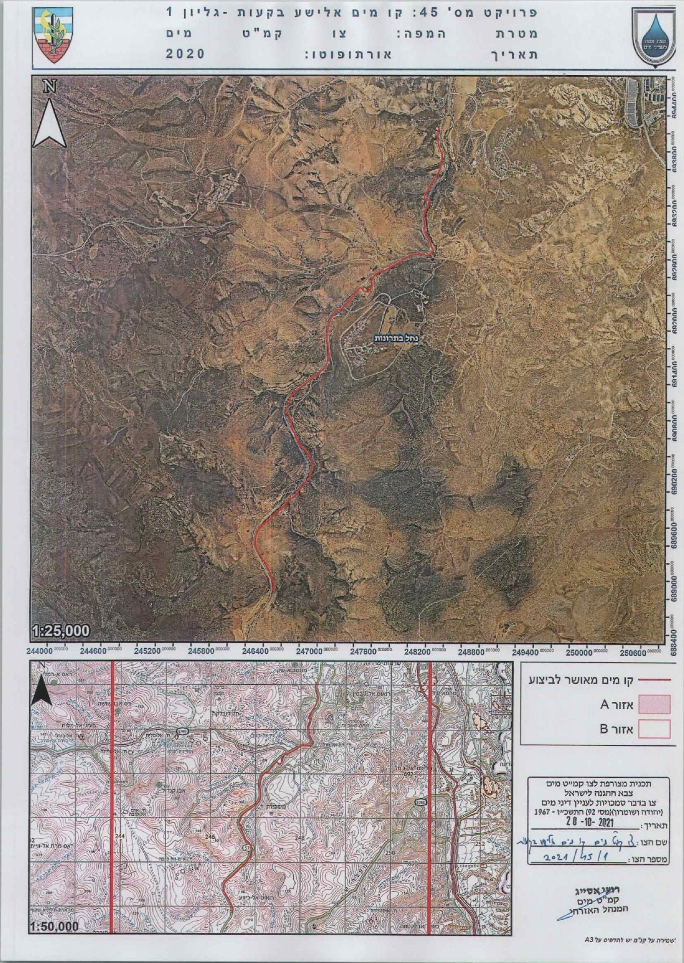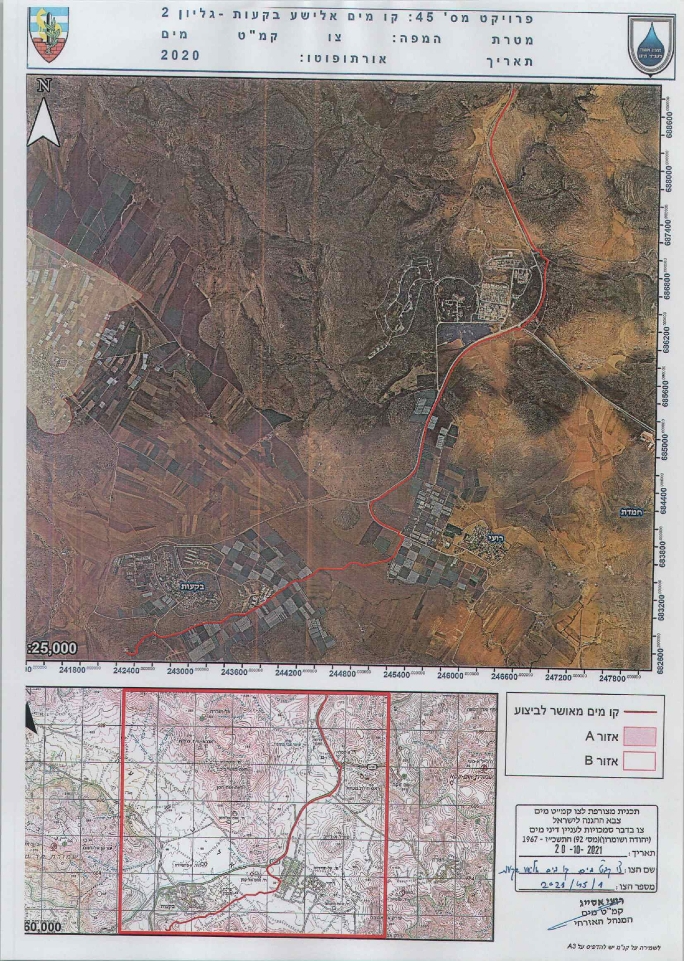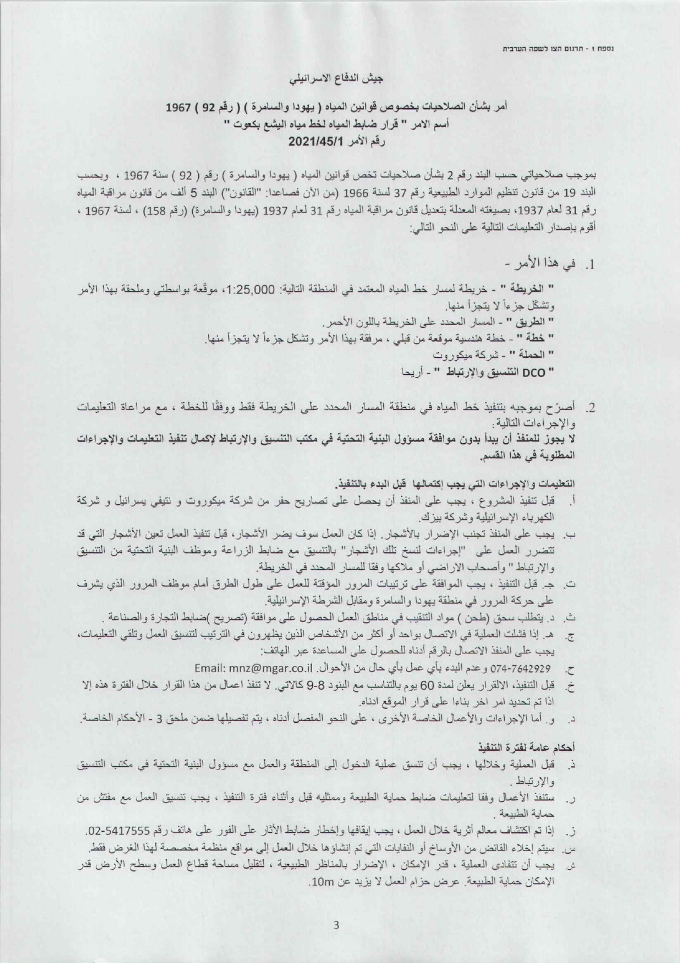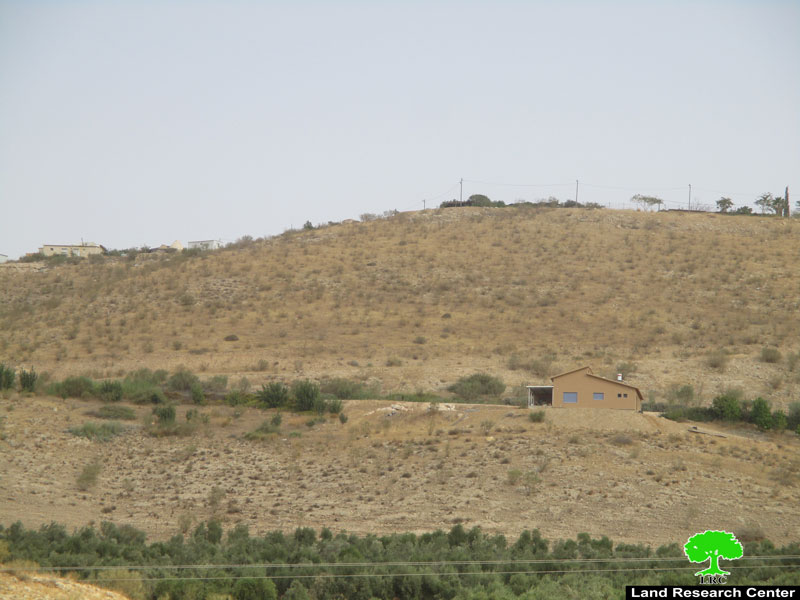2021-10-20
Military Order to install a Waterline Serving colonies at the northern Jordan Valley
Violation: New military order to install a water line.
Location: The northern Jordan Valley / Tubas governorate.
Date: October 20th 2021.
Perpetrators: Water Officer at the Israeli Civil Administration.
Victims: Residents of Bedouin communities at the Jordan valley.
Description:
Wednesday, October 20th 2021, the so-called water officer at the Israeli civil administration passed a resolution that targets the Jordan valley. The new decision holds number (1/45/2021) orders installing a water line (16.6 km * 24 inches), the line starts at Baqo’ut colony south and ends at Rotem colony in the Jordan valley area.
The water line will pass through many Palestinian communities, in particular: Khirbet Samra, Makhoul, Al-Faw, ‘Ein Al-Hilweh and Al-Farisiya , most of the land that it passes through are postures.
Israeli Decision to install a water line that serves colonies
On one hand the Israeli Occupation is Developing settlements’ infrastructure, which is reflected in establishing advanced water, roads, and electricity networks to guarantee the growth and development of the colony and attract tens of Israeli settlements’ families at the Jordan Valley. And on the other, The Israeli Occupation Forces and Fanatic settlers heavily target farmers and Bedouins at the area, and confiscate agricultural machineries and water reservoirs in order to drive people of the Jordan valley out of their homes.
During the Past five months, LRC field observation team at the northern Jordan Valley documented the destruction of hundreds of dunums of water lines at several locations like Bardala village and Sahel Al-Buqa’ia , in addition to destroying water lines that serve more than 500 dunums planted with vegetables at As-Sakut plains.
| |
|
The illegal colony of Rotem
|
| The outpost in Al-Faw area |
The Palestinian Jordan Valley (Al-Ghour):[1]
The Jordan Valley is distinct for its special climate and fertile lands that are main factors to the growth a variety of crops, the Jordan valley can possibly provide vegetables and fruits for the Palestinian Market, in addition to exporting to other foreign markets. The area is blessed with water availability located above one of the largest artesian wells in Palestine.
The Jordan Valley is located northeast the West Bank, starts from the occupied city of Bissan (north) all the way to Jericho (south), bordered by the Jordan river (east), and Tubas and Nablus governorates (west).
The Jordan Valley has a total area of (1,024,722) dunums, of which (13,000) dunums are a built up area (only 1 % of the total area), it’s population is (62,876) people in 27 Palestinian communities:
The Northern Ghour (Tubas Governorate) includes: (Bardala, Ein Al-Bayda, ‘Atouf, Kardala, Al-‘Aqaba, Ibziq, Yarza, Al-Faresiya, Al-Malieh, Ras Al-Ahmar, Humsa).
The Intermediate Ghour (Nablus Governorate) includes: (An-Naseriya, Al-‘Aqrabaniya, Beit Hassan , Ein Shably).
The Southern Ghour (Jericho governorate) includes: (Marj Na’aja , Aj-Jiftlik, Fasayel, Al-‘Auja, An-Nuwe’ima, Ein Ad-Duyuk, Ein As-Sultan, Jericho, Deir Al-Qelt, Aqabet Jaber, Deir Hajla, An-Nabi Musa).
Oslo accords divided the Jordan Valley area as follows:
A area: (115,361) dunums, about 11 % of the total area of the governorate- Under Palestinian authority’s Administrative and security control.
B area: (42,951) dunums, about 4 % of the total area of the governorate- under the Palestinian Authority administrative control, and Israeli Security Control.
C area (866,409) dunums, 85 % of the total area of the governorate – under Israeli full administrative and military control.
[1] GIS-LRC
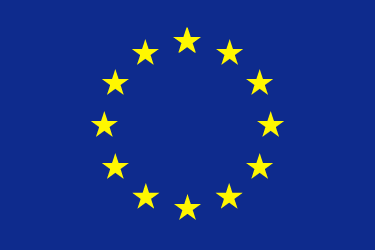
This Publication has been produced with the assistance of the EU
The Contents of this publication are the sole responsibility of the individual organization only , and can in no way be taken to reflect the views of the EU
